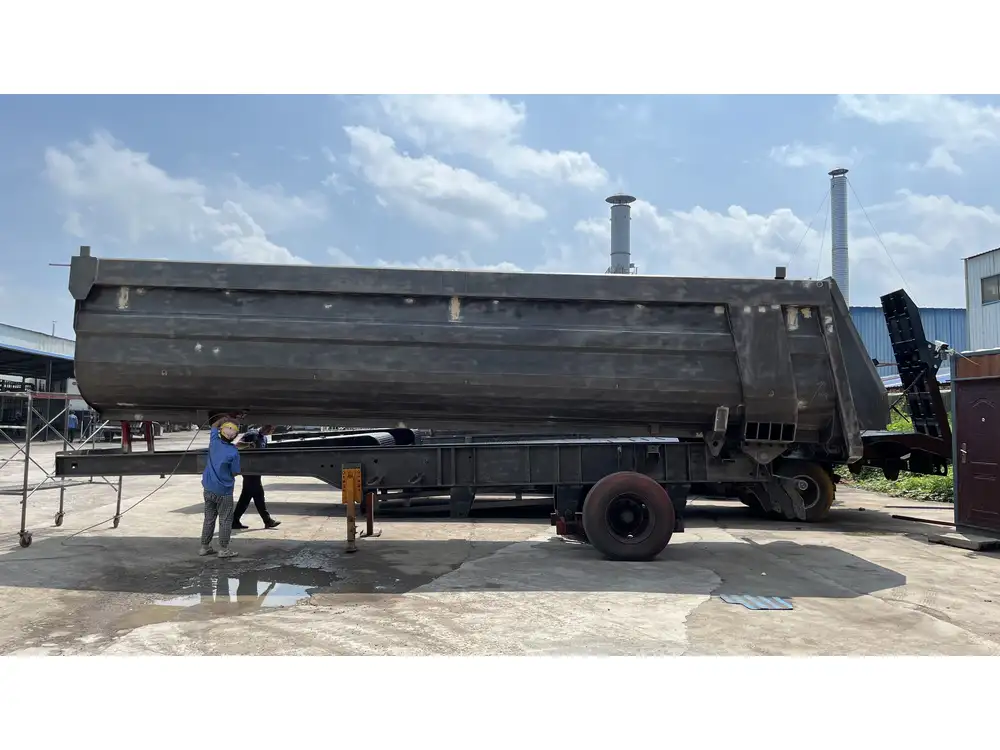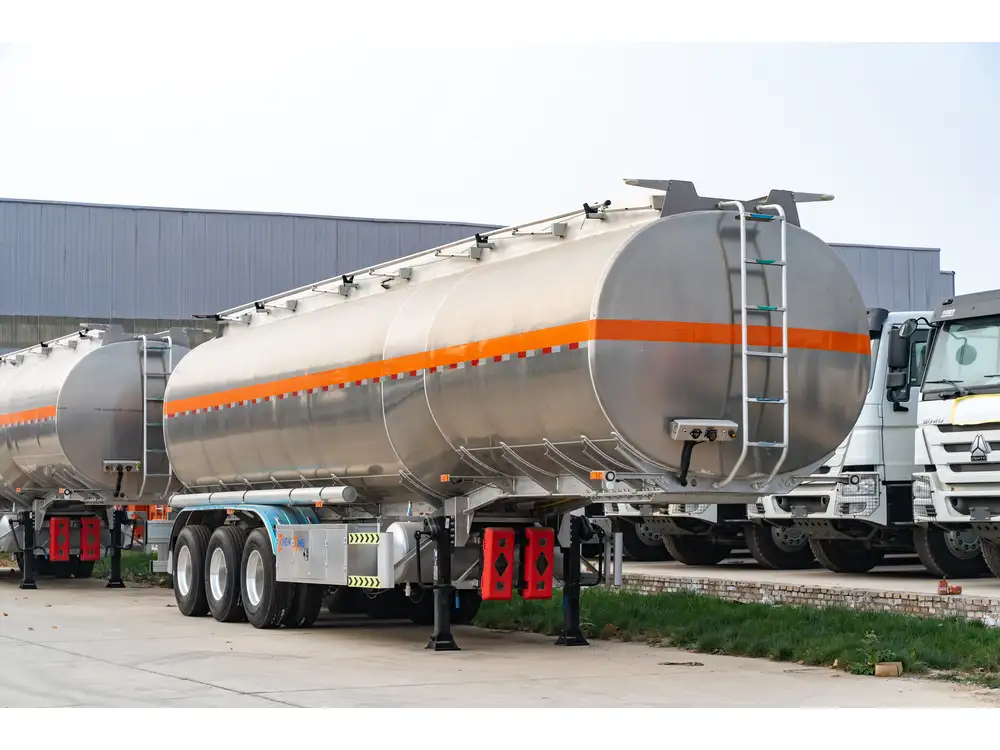Adjusting the brakes on a semi-trailer is an essential maintenance task that demands precision and knowledge. Proper brake adjustment is crucial for safety, performance, and longevity of both the braking system and the trailer itself. This guide will provide a comprehensive overview of how to meticulously adjust brakes on a semi-trailer, enabling operators to undertake this critical process with confidence.
Understanding the Brake Systems of Semi-Trailers
Before diving into the adjustment process, it’s vital to comprehend the two primary types of brake systems utilized in semi-trailers: air brakes and hydraulic brakes. Each system operates differently and has its unique adjustment requirements.
Table 1: Comparison of Brake Systems
| Feature | Air Brakes | Hydraulic Brakes |
|---|---|---|
| Mechanism | Uses compressed air | Uses fluid pressure |
| Adjustment Type | Manual or automatic (based on design) | Typically manual |
| Common Issues | Leaks, pressure loss, freeze-ups | Fluid leaks, master cylinder failure |
| Advantages | More robust, better for heavy loads | Simpler design, easier maintenance |

Key Components of Semi-Trailer Brake Systems
- Brake Chambers: Convert compressed air into mechanical force.
- Slack Adjusters: Mechanisms that adjust brake shoe distance automatically in air brake systems.
- Brake Shoes/Pads: Friction material that engages with drum or disc.
- Drums/Rotors: Components where the friction materials apply braking force to slow the trailer.
Signs Your Semi-Trailer Brakes Need Adjustment
Before we detail how to adjust the brakes, identifying the signs that indicate an adjustment is needed can save time, money, and improve safety:
- Uneven braking: If the trailer veers to one side while braking.
- Longer stopping distances: Indicating diminished braking efficiency.
- Increased pedal travel: When the brake pedal feels softer than usual.
- Squealing or grinding noises: A clear sign that maintenance is required.
Step-by-Step Guide to Adjusting Brakes on Semi-Trailers

Preparing for Brake Adjustment
Safety First
Before beginning any maintenance task, following safety protocols is essential:
- Ensure the trailer is on a flat, stable surface.
- Engage the parking brake and chock the wheels.
- Wear appropriate personal protective equipment (PPE).
Tools Required
- Wrench set
- Brake adjustment tool (for air brakes)
- Torque wrench
- Screwdriver
- Ruler or brake adjustment gauge

Adjusting Air Brakes
Check the Brake System: Before adjustments, inspect the entire brake assembly. Look for signs of wear or damage in brake shoes, drums, and connections.
Locate the Slack Adjuster: Typically found at the end of the brake chamber, these are crucial for adjustment. Ensure it is free of corrosion and dirt.
Set the Vehicle on Low-Pressure: Begin the process with the air pressure being low. This can usually be achieved by releasing the parking brake.
Inspect Slack Adjuster Position: Pull the manual knob to gauge the slack and ensure there is enough room for adjustment.
Adjust the Slack Adjuster:
- Use a wrench to turn the adjustment screw in a clockwise direction until the proper tension is achieved. Most manufacturers recommend a specific brake shoe clearance—usually between 1/16” and 1/8”, but always consult the manufacturer’s manual.
- For proper adjustment, ensure the slack adjuster moves an inch after being released.
Perform a Brake Test: After adjustments, perform a functionality test by applying the brakes and checking the responsiveness. Ensure that the adjustment maintains a uniform gap across all brakes.
Adjusting Hydraulic Brakes
Check the Brake Fluid Level: Before adjustments, check that the brake fluid is at the required level. Low fluid levels can result in inefficient braking.
Examine the Brake System: Look for any leaks from the brake lines or master cylinder and inspect the brake components for wear.
Using the Brake Adjustment Tool:
- If the semi-trailer has backing plate adjusters, use a screwdriver or brake adjustment tool to turn the adjuster wheel.
- Turn the adjuster until it makes contact with the brake shoe, then back it off slightly to allow a small gap.
Test Brake Travel: After adjustments, press the brake pedal several times to ensure that the system resets correctly and that the pedal feels firm.
Test for Drag: Ensure that the brakes do not drag after the adjustment. This can be checked by rolling the trailer while the brakes are not engaged.
Maintenance Tips for Semi-Trailer Brakes
Proper maintenance can enhance the longevity and effectiveness of a semi-trailer’s braking system. Here are several maintenance best practices:
- Regular Inspection: Conduct routine checks every 6-12 months based on usage and load conditions.
- Adhere to Manufacturer’s Guidelines: Each trailer may have unique specifications for maintenance intervals and procedures.
- Monitor Brake Fluid: For hydraulic systems, keeping an eye on fluid levels and condition will prevent catastrophic failures.
- Routinely Replace Worn Parts: Shoes, pads, and drums should be replaced promptly to prevent further damage to the braking system.

Quick Maintenance Checklist
| Task | Frequency |
|---|---|
| Inspect brake components | Every 6 months |
| Change brake fluid | Annually |
| Adjust brakes | As needed |
| Check brake lines for leaks | Every service |
Important Considerations
Federal Regulations
For operators, understanding the Federal Motor Carrier Safety Administration (FMCSA) regulations related to semi-trailer brakes is crucial. The FMCSA has established guidelines outlining the regularity and manner in which brakes must be maintained and adjusted.

Training and Expertise
While adjusting brakes can be undertaken by individuals with a keen understanding, we recommend that new operators seek training or consultation with experienced technicians. This professional insight can prove invaluable in preventing costly accidents and ensuring compliance with safety standards.
Troubleshooting Common Issues
When faced with braking issues, always refer to these questions to facilitate diagnosis:
- Are the air lines intact and leak-free?
- Is the adjustment consistent across all axles?
- Are the brake components free of oil or contaminants?
- Is the brake fluid clean and at the proper level?
Conclusion
Adjusting the brakes on your semi-trailer is not merely a maintenance task but a vital aspect of ensuring road safety and operational efficiency. From understanding the different brake systems to performing precise adjustments, the process demands diligence and thoroughness. As operators, remaining proactive in brake maintenance will not only extend the life of your equipment but also promote safer transport on public roads. Regular assessments, coupled with timely adjustments and replacements, will facilitate optimal braking performance, thus safeguarding both your vehicle and your cargo.
In adopting a structured approach to brake maintenance and adjustment, we can ensure that our semi-trailers remain reliable and efficient workhorses, navigating the roads with confidence.



